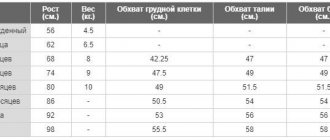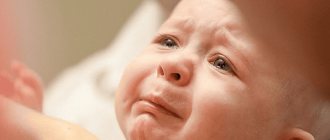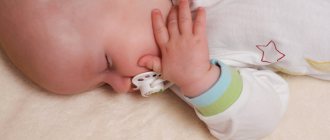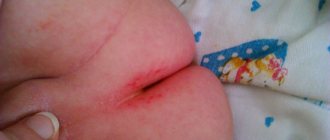In these first months of his life, the child gradually gets used to being apart from his mother. Then the first complex arises - fear. The baby is still afraid of strangers and begins to cry if he sees that mom or dad are not around.
It may seem early to some, but at this time the baby is forming a model of attitude towards close people. It is these first models that are practically impossible to remake in the future. Therefore, parents should be aware of the importance of proper upbringing from birth.
Komarovsky: children under one year old
So, childbirth ends the long wait for the baby and speaks of the beginning of development outside the mother’s body and the transition to independent existence. At this moment, the physical and mental development of the child is determined. This year he will make a big leap: from making the first sounds to the appearance of steps.
Development during this period is very intensive, weight increases almost threefold, and height increases by 22-26 cm. The first teeth appear.
The constantly sleeping baby gradually grows into a curious little person who is trying to explore this huge world, mastering more and more skills.
Moderate physical activity contributes to normal mental development, and vice versa, harmonious mental development allows the baby’s motor functions to develop in the right direction. At this time, physiological processes are regulated at the level of reflexes.
Therefore, if something goes wrong with a child, he will immediately tell you about it in the most accessible way - by crying. The environment also plays a role in the motor and mental development of children under one year old.
Komarovsky: your child from birth to one year
0-3 month . The baby learns to hold his head correctly, follows the bright objects that are or flash before his eyes. He recognizes the adults who are caring for him, his first smile appears, he tries to walk. He tries to hold on to the toys that are given to him, looking for sources of sounds. The newborn's reflexes gradually subside and disappear.
3–6 month. The baby begins to roll over from his stomach to his back and back. He begins to grab toys and tries to quickly pull them into his mouth. Sometimes you can hear quite loud laughter and individual syllables. By 6 months, the child tries to sit up independently and even crawl. When adults support him, he already stands confidently on his feet and usually babbles something. Gradually introduce complementary foods.
6–9 months. The baby already sits very confidently, has almost mastered crawling, and in some cases walks independently by the end of this period. He quickly responds to the request “give”, and he perceives speech better and better. Well-developed fine motor skills allow the child to grasp small objects using the thumb and index finger (“pincer grasp”). It's easy to tear the paper and scatter the toys! Parents are increasingly hearing their baby’s first words: “mom,” “dad,” and even some animal names.
9–12 months. In the last three months of the first year of life, the baby takes its first steps. Everything around you is of greater interest. The baby does not miss an unfamiliar object; there is an increased attraction to the contents of cabinets and shelves, because he is now able to reach them. Still, they use tearing paper (especially wallpaper) and pressing all kinds of buttons on the remote control. Speech develops and vocabulary expands.
Children under 1 year - Komarovsky talks about how to communicate with a child
There are some parents who believe that talking to a child during this period is useless and even stupid, but the baby does not understand yet. But why did they even decide that he didn’t understand anything? The fact that he does not determine the exact meaning of words, he perceives the general meaning with the help of non-verbal means of communication (gestures, facial expressions, tone of voice, etc.). You need to talk to your child, if only because thanks to this he will learn to understand all your speech after some time.
What does it mean?
- Communication with a child under one year of age is necessary for the further development of speech. Try to speak to him in a similar language.
- Dilute the “childish” speech that you pronounce with ordinary, “adult” sentences. Of course, you shouldn’t tell him long monologues and complex sentences. Better contact him and talk about the things that surround him (toys, pieces of furniture, animals, etc.).
- Talk to the child, not to the child. It is important. Be sincere and he will understand you.
Dr. Komarovsky's advice: how to potty train a child?
Advice from Dr. Komarovsky:
- The doctor believes that the optimal age for potty training a child is 18-24 months. The doctor claims that until the age of 2.5-3 years, the child’s body is not physiologically ready to control the urge to go to the toilet. Therefore, it makes no sense to put a child on the potty when he is under one and a half years old.
- Of course, you can teach a child to go potty at 6 months, but he will not be able to completely control the process. Therefore, the closer to 3 years the child’s age, the faster the process of getting used to and getting used to the potty will occur.
- Under no circumstances should you force a child to sit on the potty, because this can cause a lot of negativity and protests from the baby. At the same time, excess fear can prolong the process of potty training, since the child will be afraid of this object like fire.
Activities with mothers
About the psychomotor development of a baby up to 1 year
1 month

In motor skills: unconditioned reflexes predominate (especially sucking and grasping), erratic movements of the legs and arms fade away, physiological hypertonicity decreases.
Statically: towards the end of the first month, the baby holds his head for several minutes when he lies on his tummy.
In sensory reactions: occasionally looks at the surroundings and concentrates hearing.
In speech: the baby pronounces vowels roughly similar to “a”, “i”, “e”.
In emotions and social behavior: good reaction to loud sounds and bright colors (light); for a short time he can focus on the face of someone close to him.
2 month

In motor skills: more and more often the baby turns his head in different directions.
In statics: it becomes possible to keep your head vertical.
In sensory reactions: the baby focuses his attention on a moving object and often makes noises.
In emotions and social behavior: smiles and focuses on a person’s face, even if he is in motion.
3 month

In motor skills: almost every unconditioned reflex disappears, the tone gradually returns to normal, the baby tries to reach for an object (toy).
In static conditions: holds the head well.
In sensory reactions: good reaction to sound and light stimuli, focuses his attention.
In speech: hums often and for a long time, similar syllables are heard.
In emotions and social behavior: smiles at everyone, even strangers, those around them receive a response to emotional communication from the child.
4 month
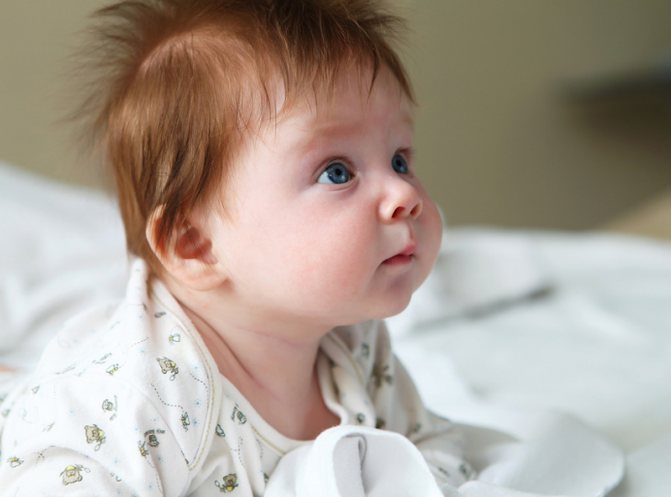
In motor skills: movements become purposeful, rolls over from back to side, holds toys well.
Static: begins to recognize all loved ones, the toy lends itself to careful study.
In sensory reactions: active reaction to sound and bright objects.
In speech: consonant sounds are heard, more and more joyful exclamations.
In emotions and social behavior: responds to emotional communication with loud laughter.
5 month
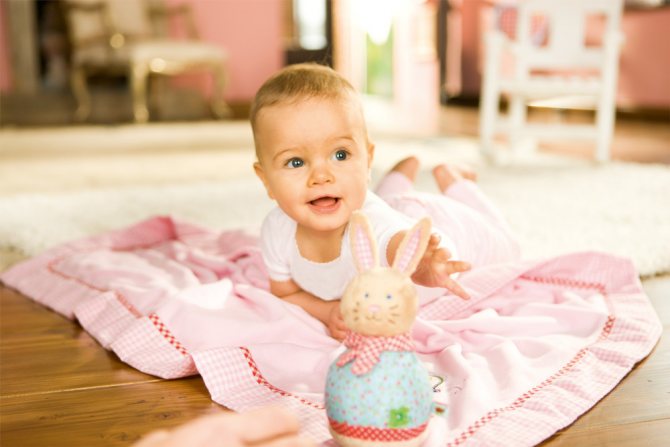
In motor skills: rolls over from stomach to back and vice versa, reaches out and touches toys.
Static: standing on his feet with support, touching the floor with his fingertips.
In sensory reactions: distinguishes between familiar and unfamiliar, pulls any suitable object into the mouth.
In speech: pronounces chains of syllables.
In emotions and social behavior: communication with another baby brings joy, is able to respond to a certain intonation in the voice.
6 month
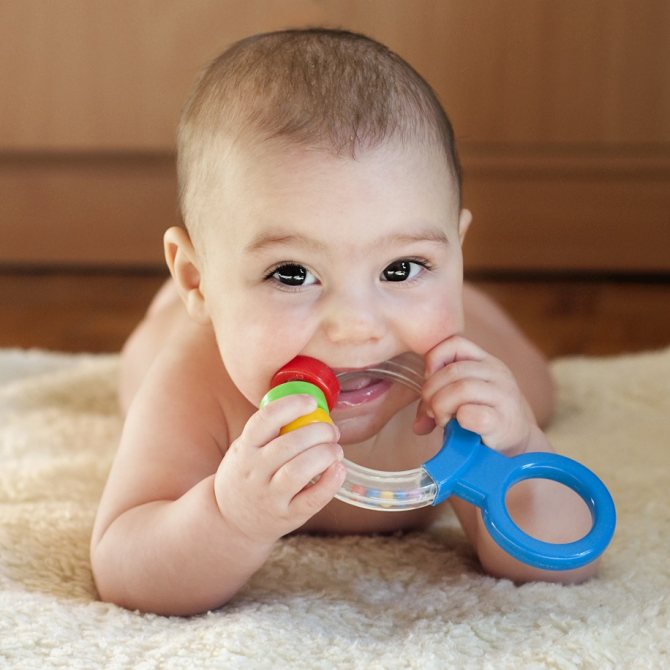
In motor skills: active turns, takes toys, can transfer them from one hand to another.
Statically: lying on the stomach, can lean on outstretched arms, gradually sits down.
In sensory reactions: active reaction to loved ones, watching for a toy that has fallen.
In speech: improves speaking skills, begins to connect syllables, changes the strength and tonality of sounds.
In emotions and social behavior: actively asks to be held.
7 month
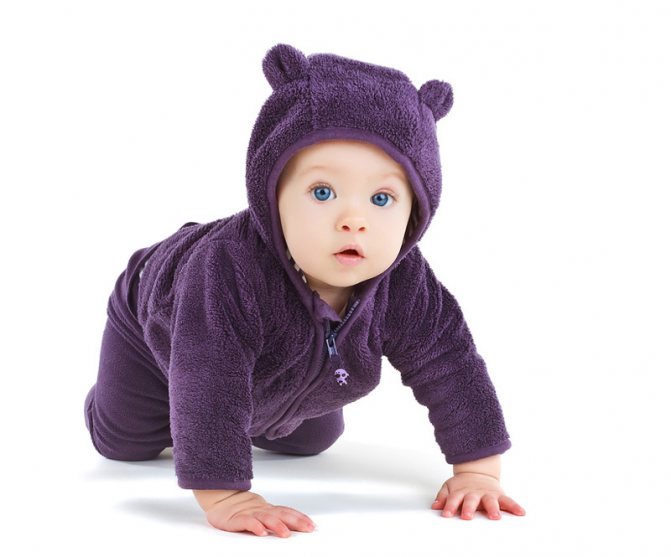
In motor skills: lying on his back, playing with his legs.
In statics: I learned to sit with my back straight; begins to spring with its legs if it is placed vertically.
In sensory reactions: strives to take a toy without changing position.
In speech: speaking skills are improved.
In emotions and social behavior: he is involved in the game and is passionate about it, begins to persistently demand his mother’s attention.
8 month
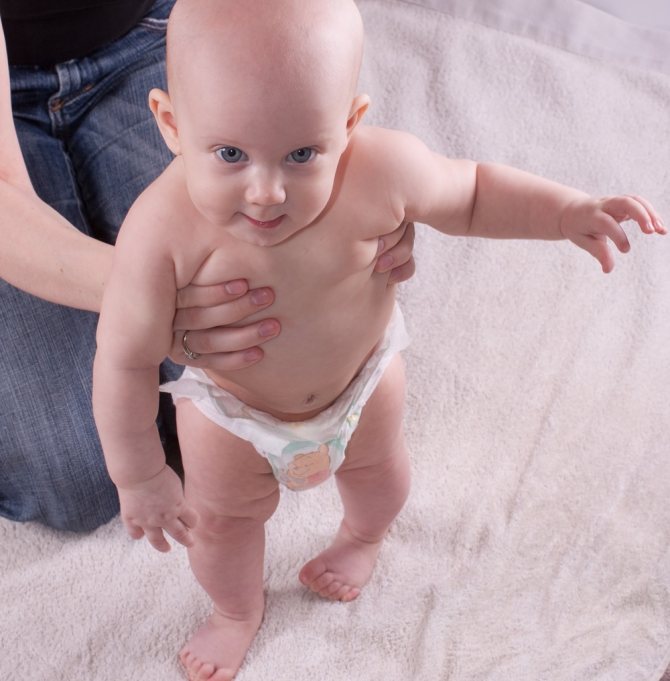
In motor skills: wants a toy in each hand.
In static conditions: active crawling on the stomach with rearrangement of arms; he lies down, sits up and gets up.
In sensory reactions: can nod his head to a question “yes” or “no”; successfully repeats “okay” and waves goodbye.
In emotions and social behavior: talks a lot and carefully studies other children.
9 month
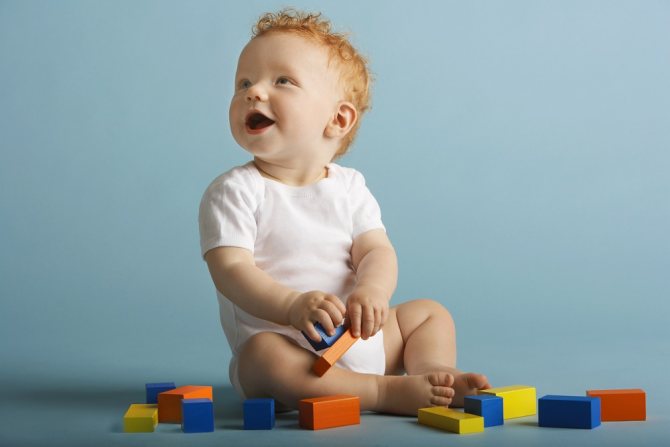
In motor skills: he plays with toys and uses a trick that is fun for him: throwing toys away and waiting for someone to pick them up, and then throwing them again.
Static: swings in the “on all fours” position, stands with support.
In sensory reactions: simple questions are answered with action.
Speech: begins to clearly double syllables.
In emotions and social behavior: quickly makes contact, repeating other people's actions.
10 month
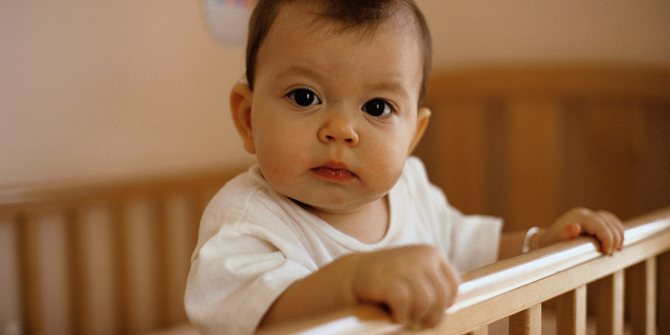
In motor skills: movements become more purposeful, during this period he can fold a pyramid, put a toy in place, close a box. Learns to use a “tweezer grip”: picks up small objects using the thumb and index finger.
In static conditions: crawls confidently and quickly; stands holding onto an object.
In sensory reactions: actively copies the movements of adults.
In speech: speaks the first words; tries to enter into dialogue by repeating familiar words.
In emotions and social behavior: there is a very emotional reaction to various movements and facial expressions; I like to play with children.
11 month
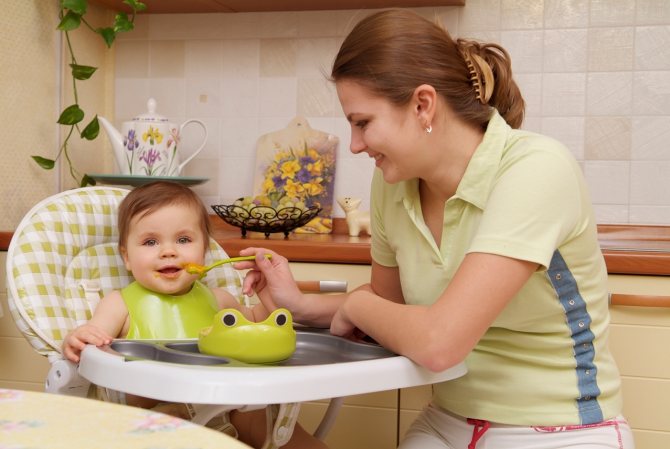
In motor skills: improves pincer grasping skills.
Static: crawls very actively and has learned to stand without leaning on anything; can take a couple of steps if supported by both hands.
In sensory reactions: can fulfill a simple request; understands when he is told “you can” or “you can’t.”
In speech: speech has become more complex, pronounces ordinary words in a simplified way. Speech becomes more difficult.
In emotions and social behavior: he is picky about other kids, rejoices with them, the first friendships appear.
12 month
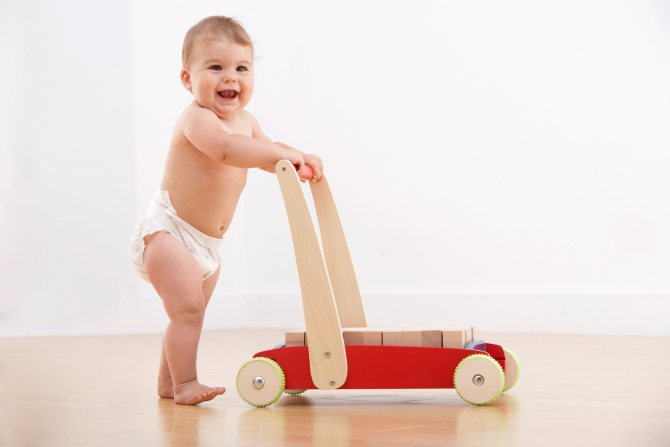
In motor skills: plays with toys for more than an hour.
Static: begins to walk with or without support from furniture.
In sensory reactions: can fulfill more complex requests, the number of different reactions to others increases.
In speech: vocabulary is approximately 10.
In emotions and social behavior: he really likes to play with other children, plays hide and seek, hugs, and expects praise from loved ones.
These development standards are internationally accepted and applied in almost all countries. Komarovsky will tell you how a child under one year old behaves in the video below.
Toys for newborns at 1-2 months: rattles and mobiles
The very first and most necessary toys for children aged 1-2 months are rattles. They can be traditional, with jingling balls or bells, or electronic, with simple programmed melodies. The first rattles for children were produced very small, their diameter was only 6-8 cm.
You can also buy a rattle made in the form of beads for your baby.
Whole garlands of multi-colored balls are attached to a stroller or crib. Rattle pendants are usually attached to a plastic arch.
A little later, the bracket with the pendants can be moved from the crib to the playpen.
Parents' choice also falls on such garlands due to their versatility. You can remove some of the segments from the pendants so that in the future the baby can use them as regular rattles.
A relatively new type of toys for little ones are crib mobiles. They can be started with a key or run on batteries.
A newborn cannot yet appreciate the variety of colors and shapes of the garland segments, but he will be soothed by the quiet melodies that the mobile emits on the crib. Some models of such rattles can reproduce the sounds of nature. Babies really like it: such sounds can be compared to white noise for newborns. Musical carousels have a good effect on the baby's nervous system, and also allow him to develop his ability to focus his vision: after hearing a sound, the baby begins to look for its source with his eyes.
Interesting! How to potty train a baby?
Mom can sew a garland for the crib and stroller herself. As a filler for fabric or knitted rattles, mothers use beads, buttons, and sometimes even peas and rice - they give a more interesting dull sound. When the baby gets a little older and can touch the carousel with his hands, fabric rattles will help diversify his tactile sensations.
Both musical carousels and rattle garlands are hung at a distance of 30 cm above the crib.
It is important to remember that newborns also need variety. Even if your baby falls asleep perfectly with a musical carousel and smiles every time he sees it, the baby needs to be given a rest from such a rattle. You need to not just change the melody, but replace the musical carousel with a calmer toy without melodies.
Basics of child health up to one year
Children under one year old, says Komarovsky, have an undeveloped immune system, so it is necessary to carefully monitor the state of the environment where the baby is.
The temperature of clean air in the child's room should be between 15-18 degrees, and humidity from 55% to 75%. You need to limit the use of household chemicals as much as possible. Construction materials and furniture in the room should be made from environmentally friendly materials so as not to cause allergies in the baby.
Carry out wet cleaning regularly (it doesn’t have to be thorough and make the room completely sterile), just avoid the accumulation of dust on carpets, soft toys, and surfaces of objects.
As for nutrition, Dr. Komarovsky strongly recommends that parents under no circumstances force their baby to eat. Keep your meal intervals and let him eat when he really wants to.
Monitor the quality of the toys you offer your child. It would be preferable not to give soft toys to a baby under one year old.
Daily walks are another guarantee of a newborn’s health. Dress for the weather and walks will bring pleasure to both you and your child!
Dr. Komarovsky's advice for newborns
Now all systems, circuits and power modes are really being reviewed. The most interesting thing is that eating by the hour is recognized as the most ineffective and even harmful. The fact is that this entire regime was originally invented by a man who trained dogs. It was noted that if an animal receives food at the same time, its digestion improves. It was on this principle that regular nutrition and regimen were based.
Now many doctors, including Dr. Komarovsky, say that this system is outdated. That is, there is no need to feed the baby by the hour. The ideal option is to feed when the child asks. This will certainly happen if the baby is absolutely healthy. After all, the majority of babies are quite mobile and active, so to carry out physical exercises or some vigorous movements, energy is needed, which can be obtained with food.
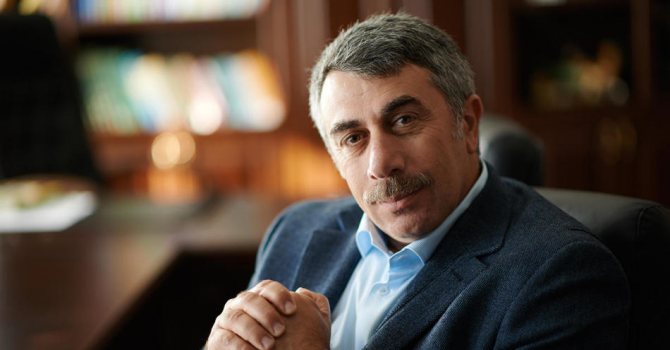
Doctor Komarovsky
Advice from Dr. Komarovsky:
- Dr. Komarovsky recommends that babies under 1 year of age be given exclusively breast milk. Replacing breast milk with a formula, even a highly adapted one, is unacceptable for the simple reason that no formula can replace breast milk in terms of nutritional value and content. Formula feeding is permissible only in exceptional situations when the mother does not have milk.
- In addition, Dr. Komarovsky believes that there is no need to avoid giving children sweet and unhealthy foods. That is, the child has the right to eat candy and chips. The only thing is that parents need to teach their child to eat this food wisely, in small quantities. Candies and other sweets are sources of fast carbohydrates that can immediately provide energy and are suitable if the child is quite active. Nothing bad will happen if your baby eats a couple of candies a day. This is absolutely normal.
- Now many people question the advisability of preparing liquid food. Previously, it was believed that in order for a child to have a normal stool consistency and avoid constipation, it was necessary to give him liquid food, that is, soups.
- Dr. Komarovsky says that in some countries they don’t prepare soups at all, they don’t have such a tradition, but children grow well and are healthy. There is no need to force your child to eat soup every day. Yes, a mother can cook liquid food, but there is no need to force the child. It will be beneficial if the baby himself does not mind trying the soup.
- Regarding feeding children under 1 year of age with milk, Dr. Komarovsky recommends that mothers control their diet. After all, what the mother eats will go into the milk. Thus, it is necessary to adhere to the principles of proper and varied nutrition. In this case, the child’s body will be saturated with all the necessary products.
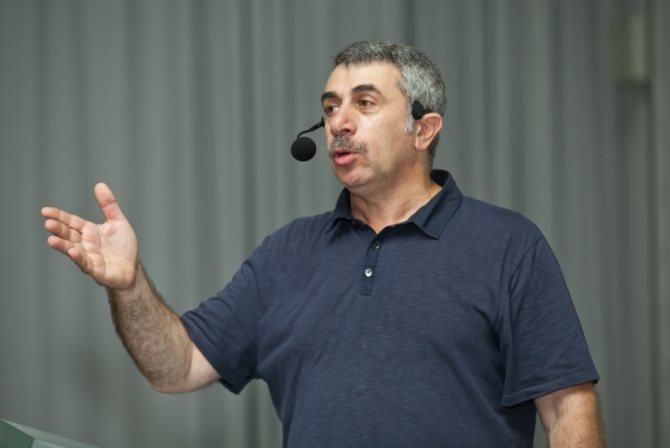
Komarovsky
Hardening, nutrition and active lifestyle
Hardening occupies a special place in the postulates of the methodology of Evgeniy Olegovich Komarovsky. Of course, he does not call for throwing the baby into an ice hole, but recommends gradually accustoming the baby to cool water. The doctor believes that hardening comes from natural mechanisms, so it is necessary to create conditions for the development of those very adaptive abilities that will help in the development of the child as a whole.
In a word, try to bring your baby’s lifestyle closer to natural conditions and make him active.
Go out into nature, take a walk in cool weather, take a contrast shower, and then the baby will grow up healthy, says the doctor. Author of the publication: Anna Kulikova

